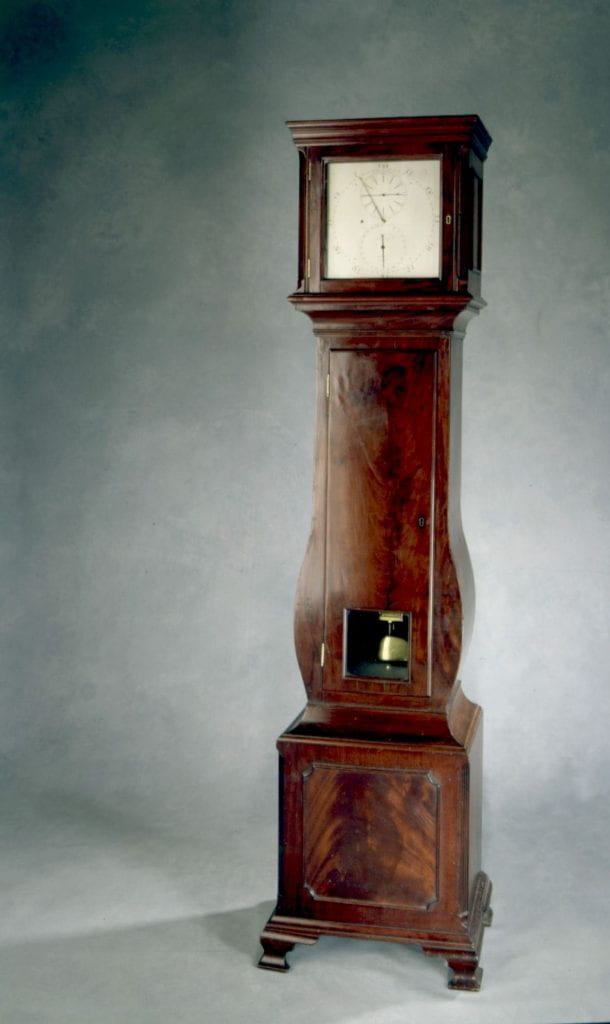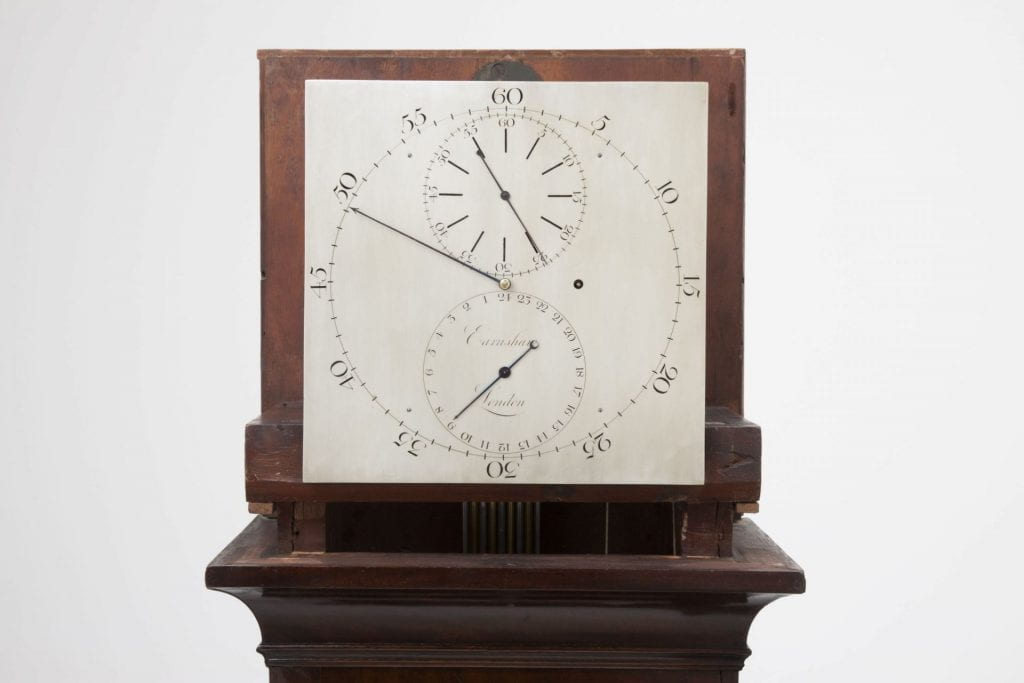

Thomas Earnshaw was an English watchmaker who helped to further simplify the process of marine chronometer production. He also made other instruments, such as this Astronomical Regulator Clock made in 1791. The entire device is made of polished mahogany. There is a rectangular door on the front of the trunk with a small square window in the middle front portion that allows the viewer to see the swinging pendulum.19 The clock face is square and made of silvered brass and features three dials. The largest clock consists of a minute’s ring with black marks and numerals. Inside the large clock is two smaller clocks. The top clock is for seconds and the bottom clock is for 24 hours. Both have black markings and numerals, as well.19 The instrument is very large, and is as tall as an average man at 71.25 inches. Moreover, this is perhaps one of the more unique items in the exhibit because this very clock was used on the Matthew Flinders voyage to circumnavigate Australia; a point of discussion in the beginning of the exhibit.7 Flinders did not use this for anything on his ship. The rocking of the boat would have interrupted the swinging of the pendulum. It was used on shore in a tent observatory. It kept the sidereal time, which is time that is based on Earth’s rotation relative to fixed stars.20 This allowed astronomers to use it as a timekeeping devise to locate celestial objects.20 On Flinders voyage, it was used in conjunction with Hadley’s Sextant and Ramsdens Universal Theodolite to check the “going rate” of the chronometers by calculating longitude using the lunar method.2